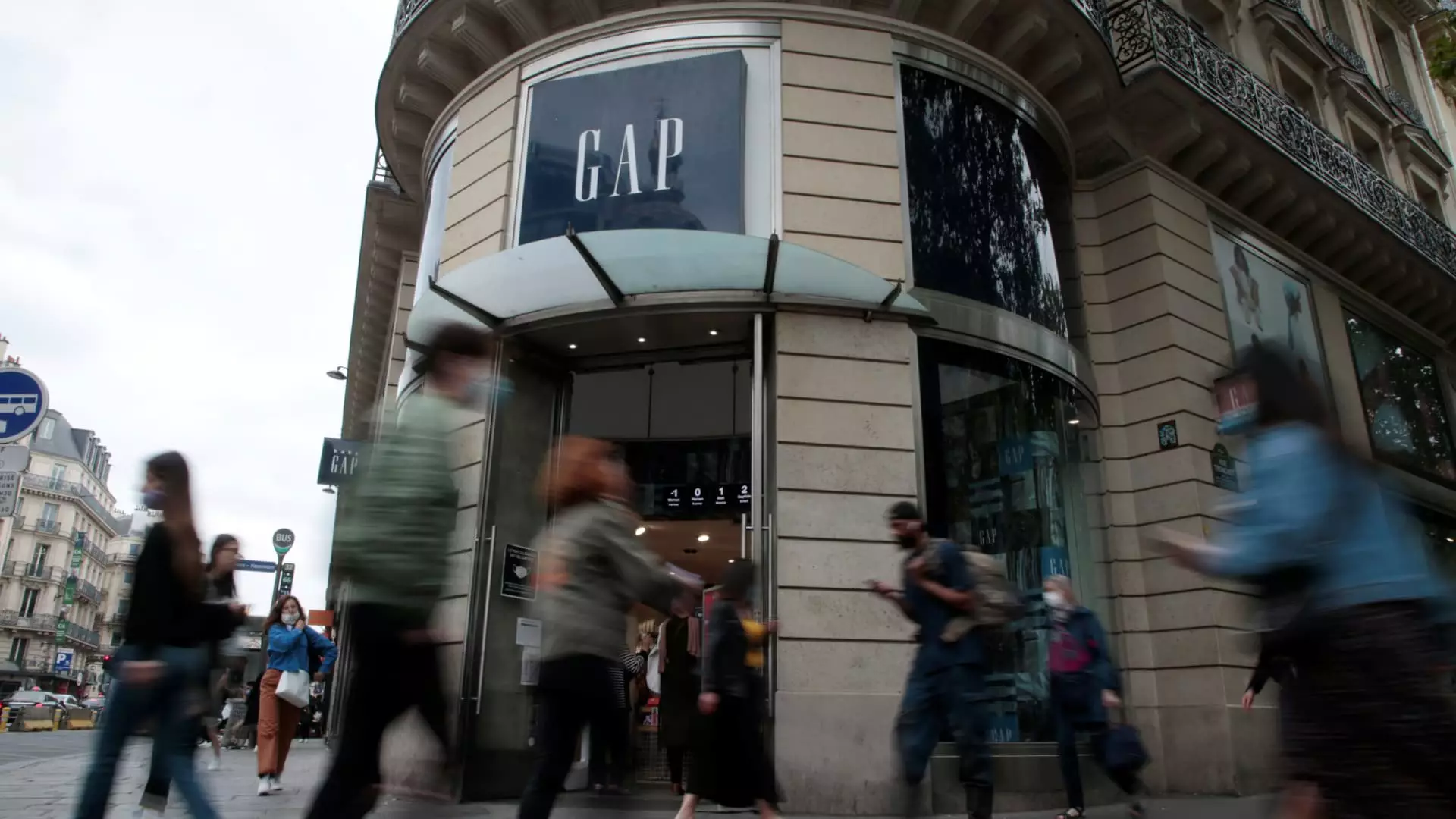In a climate where uncertainties abound, Gap’s grim forecast casts a shadow over the apparel giant. The company estimates that new tariffs could siphon off an alarming $100 million to $150 million from its earnings, indicating a serious threat to its operational viability. This estimation caused an immediate negative reaction, with shares plummeting over 15% in after-hours trading following the announcement of its fiscal first-quarter earnings. Such a sentiment reflects a broader market anxiety and raises critical questions about the sustainability of Gap’s business model in the face of escalating geopolitical tensions.
The Impact of Tariffs: A Costly Landscape
The crux of Gap’s current turmoil lies in the newly imposed tariffs, which impose a staggering 30% duty on imports from China and a 10% levy on goods from other nations. While the prospect of these costs looms ominously, Gap has donned an optimistic façade, stating that it has managed to mitigate around half of the impending financial blow. Yet, the reality remains stark. Without further intervention, the company anticipates that the impact will bear down on its financial health, potentially influencing stockholder confidence and investors’ perception of its future prospects. The manner in which Gap navigates these treacherous waters could dictate whether it thrives or merely survives in a fiercely competitive landscape.
A Decisive Shift in Supply Chain Strategy
Acknowledging the evolving landscape, Gap’s CEO Richard Dickson has signaled a pivot in strategy that includes diversifying its supply chain and reducing reliance on Chinese imports. This move vividly highlights the company’s attempts to adapt to a rapidly changing economic environment, though it raises the urgent concern of whether these changes can be executed swiftly enough to mitigate the financial fallout from tariffs. The decision to source more cotton from the U.S. underscores both necessity and opportunity as Gap seeks to realign its operations in response to external pressures. However, such shifts take time, and the market is notorious for its unforgiving nature toward businesses that appear slow to act.
Resilience Amid Turbulence: Positive Earnings Defy Expectations
Despite the looming tariff threat, Gap recently reported fiscal results that surpassed Wall Street’s predictions in both earnings and revenue. With earnings per share hitting 51 cents against an expected 45 cents and revenue climbing to $3.46 billion, the company has momentarily silenced critics questioning its long-term viability. Yet, while these figures may project an image of steadiness, they also serve as a convenient distraction from the deep chasms forming due to external market factors. For a company of Gap’s stature, consistently delivering unexpected results could be a double-edged sword, providing short-term relief while postponing critical decisions about its fundamental business strategy.
Brand Performance: Mixed Outcomes Amidst a Transitory Period
Examining Gap’s brands reveals a complicated narrative. Old Navy continues to shine, contributing significantly to sales with a 3% increase year-on-year, propelled by successful marketing initiatives aimed at rejuvenating the brand’s image. Meanwhile, the namesake Gap brand itself demonstrated resilience, with a 5% uptick in sales and a commitment by Dickson to focus on innovative marketing to revitalize its presence in a crowded marketplace. However, the situation is far less optimistic for Banana Republic and Athleta, both facing declines in sales. These figures compel a reevaluation of brand strategy to not only retain current customers but attract new ones as well—a Herculean task considering the industry’s complexity and consumer volatility.
Future Prospects: A Cloudy Horizon
Looking forward, Gap finds itself engulfed in a storm of potential adversity. With the threat of reciprocal tariffs, particularly affecting vital manufacturing partners such as Vietnam, there’s a palpable tension as the company approaches the next fiscal quarter. Dickson’s hope for minimal impact on consumer price is undoubtedly buoyed by optimism, but the specter of inflation looms large in economic discourse. As consumers grapple with rising costs across various sectors, will Gap’s strategy around brand loyalty and product innovation suffice to keep its sales afloat?
This precarious balancing act of mitigating tariff impacts while striving to meet consumer expectations is a challenge that demands coherent, decisive leadership from Gap’s executives. While the fiscal landscape promises complexity and potential downturns, how Gap’s leadership embraces this challenge will ultimately dictate its trajectory in an increasingly hostile business environment. The stakes have never been higher, and the decisions made today will resonate long into the future.


Leave a Reply